What if the best yakisoba you’ve ever tasted wasn’t the classic sauce yakisoba? This shio (salt) version delivers pure, clean flavors that let fresh vegetables and succulent shrimp actually shine.
And there’s one small cooking sequence that makes all the difference. Let’s dive in.
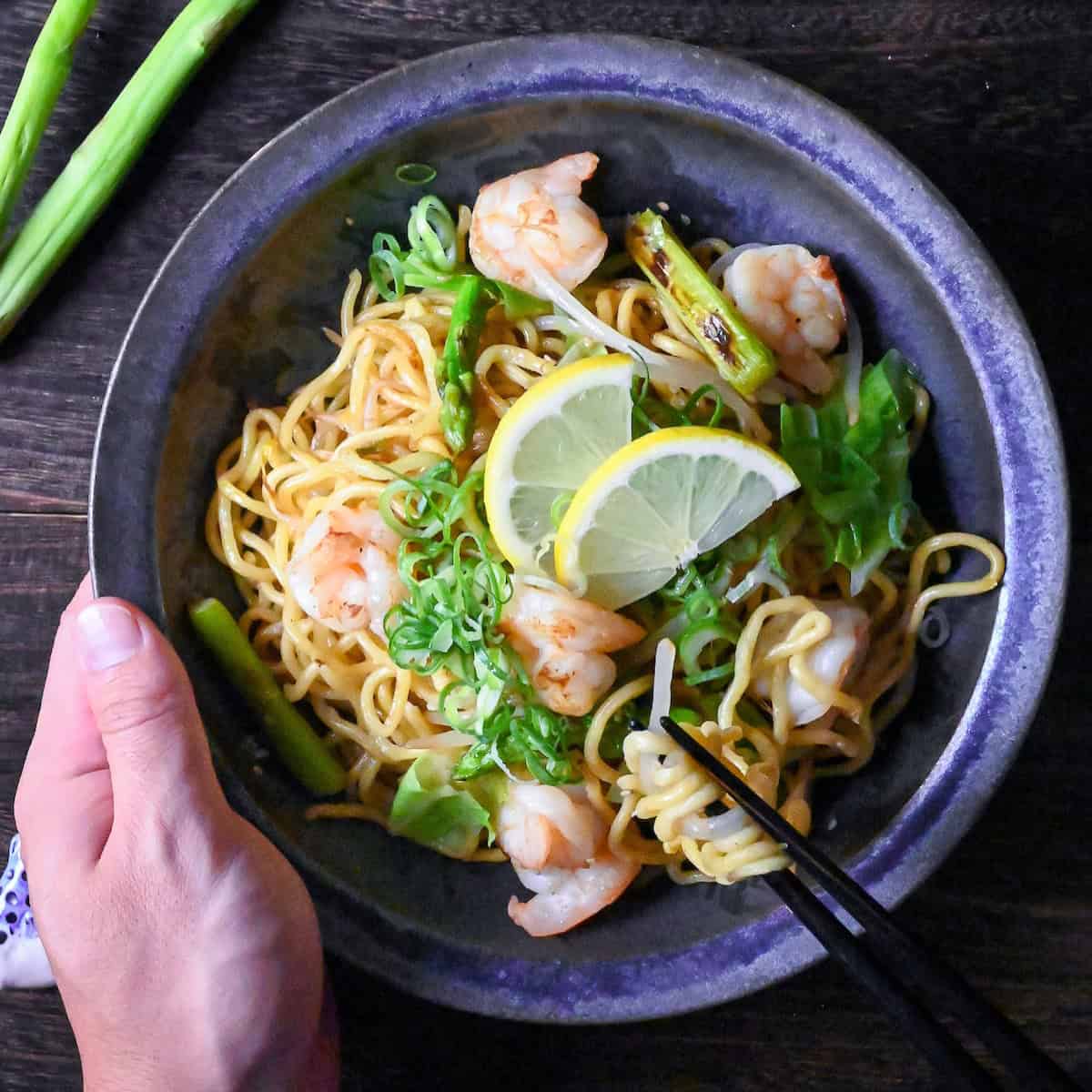
Shio Yakisoba
Recipe Snapshot
- What is it? A clean, citrus-salted yakisoba that crackles with bean sprouts and shines with lemon.
- Flavor profile: Citrusy, Bright, Clean
- Why you’ll love this recipe: With just one pan and under 20 minutes, you’ll have a noodle dish that feels fresh yet effortless.
- Must-haves: Yakisoba noodles (or ramen noodles), Fresh lemon (zest + juice), Large pan or wok
- Skill Level: Easy
- Suitable for Meal Prep: Partially
Summarize & Save this content on:

What is Shio Yakisoba?
Shio yakisoba translates to “salt yakisoba,” and it’s nothing like the Worcestershire-sauce based version most people know. Instead, it’s clean, bright, and aromatic.
The word shio (塩) means salt in Japanese, appearing in dishes like shio ramen (salt-based broth), saba no shioyaki (salt grilled mackerel), and shiozake (salted salmon).
Just like those, this shio yakisoba recipe is paired with lighter proteins, like shrimp!
Seafood Shio Yakisoba Ingredients
What You’ll Need for Shio Lemon Sauce
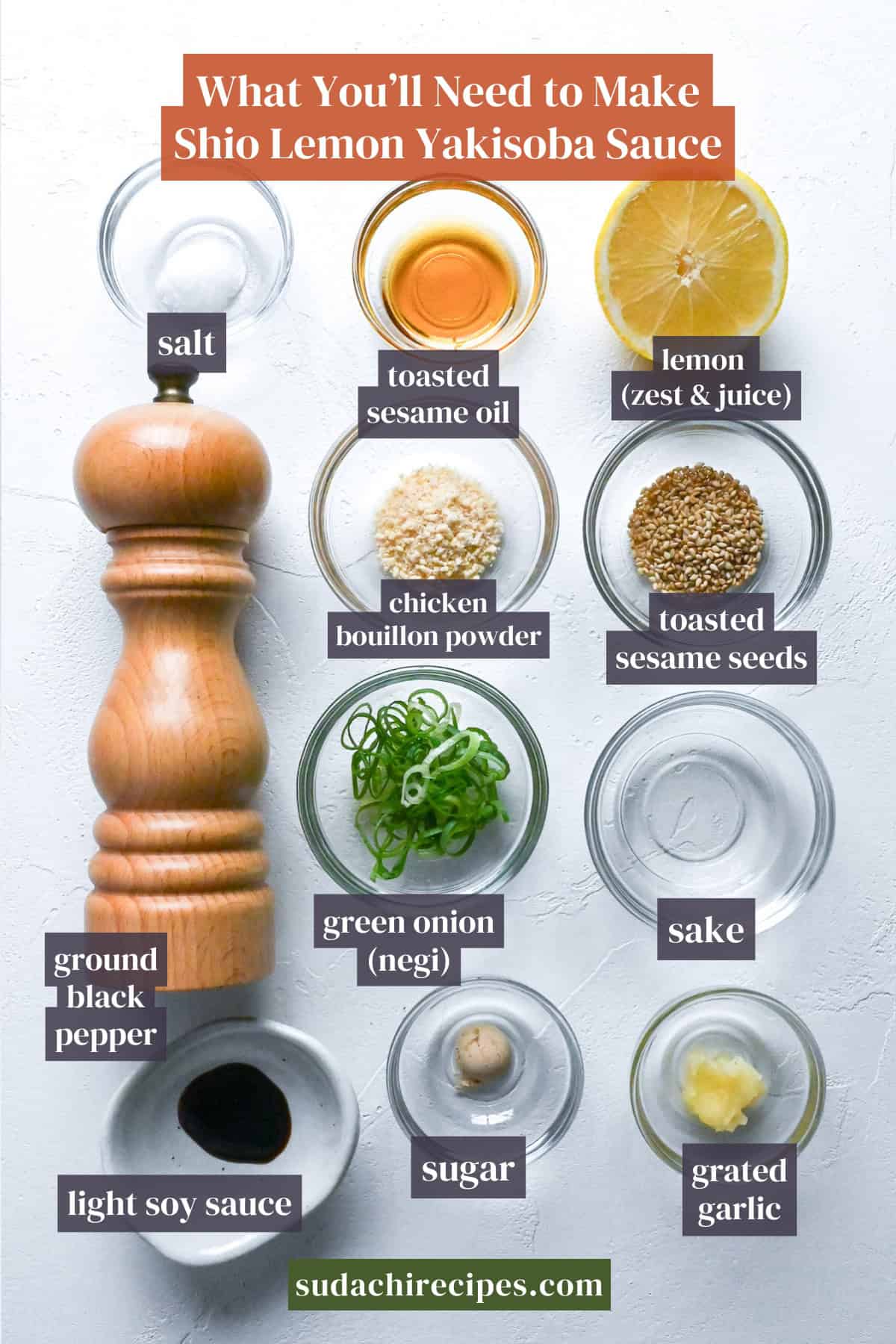
- Lemon: Fresh lemon is ideal here since you’ll use both the zest and the juice. That said, bottled lemon juice will still get you most of the way there in a pinch.
- Light Soy Sauce (Usukuchi): To understand the difference between Japanese light vs dark soy sauce, know that usukuchi is lighter in color and saltier than the regular variety, though either works well in this recipe.
What You’ll Need for Shio Yakisoba

- Yakisoba Noodles (pre-steamed): Look for pre-steamed yakisoba noodles (ready-to-use) in the refrigerated section of your local Asian market. If you only have dried or fresh noodles on hand, check out my sauce yakisoba recipe for how to prep them.
- Shrimp: Any shrimp works here, but make sure to deshell, devein, and clean. See my spicy yaki udon recipe for the full walk-through. You can also use other seafood if you like.
How to Make My Shio Yakisoba
Before you start: make sure to deshell, devein, and clean your shrimp. If you’re using frozen, defrost properly.
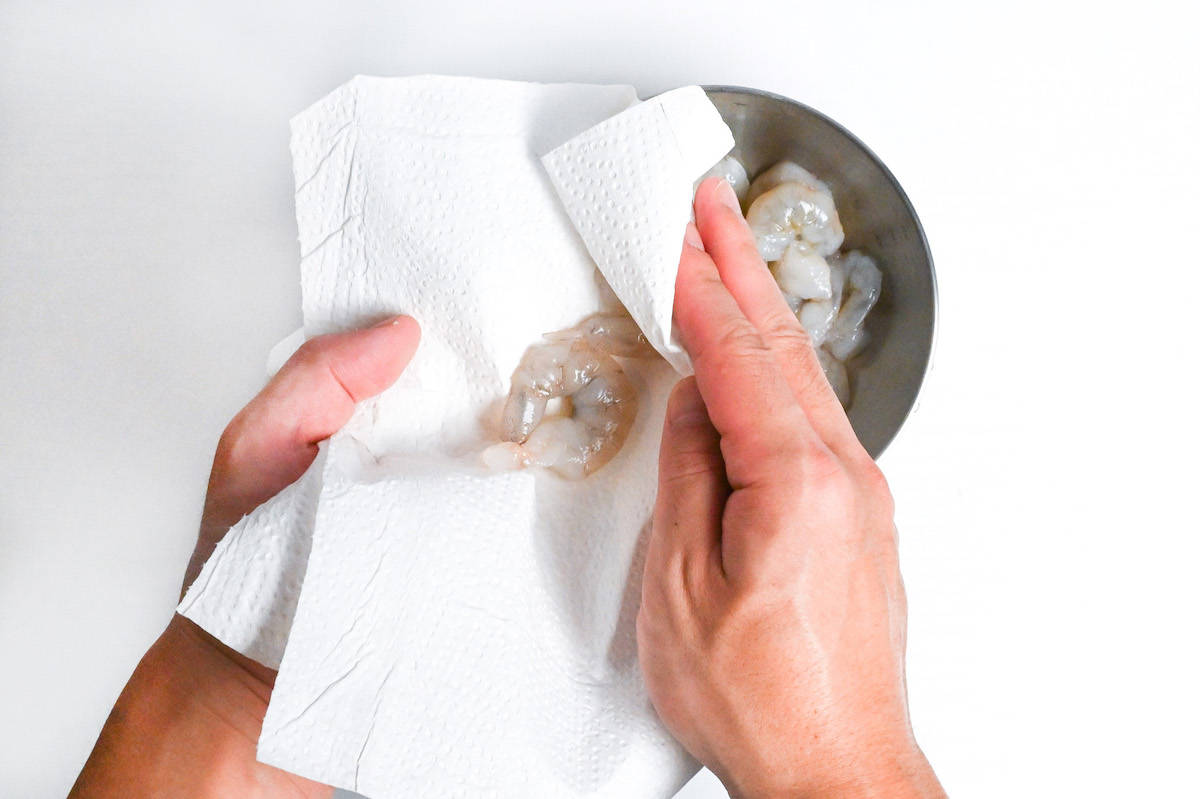
If you prefer to watch the process in action, check out my YouTube video of this shio yakisoba recipe!
i. Whisk together lemon juice and zest, salt, black pepper, sugar, soy sauce, sake, grated garlic (or garlic paste), toasted sesame oil, Chinese-style chicken bouillon powder, sesame seeds, and chopped green onion.
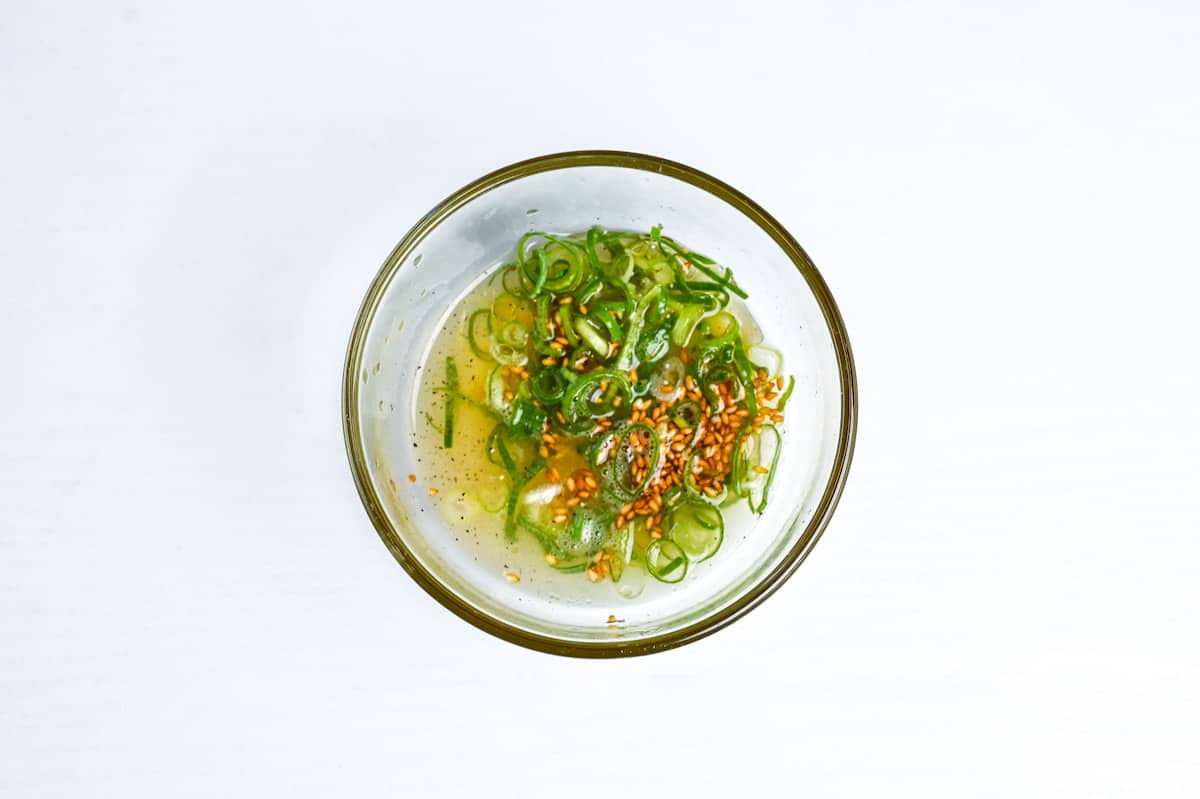
It’s a clean-tasting chicken bouillon powder made with Asian aromatics. Unlike regular bouillon cubes that contain different herbs and spices, Asian-style versions stay simple and flexible to add depth for many dishes. Check out my guide to the best chicken bouillon powder available today.
i. Fill a bowl with cold water and add the bean sprouts along with a couple generous pinches of salt.
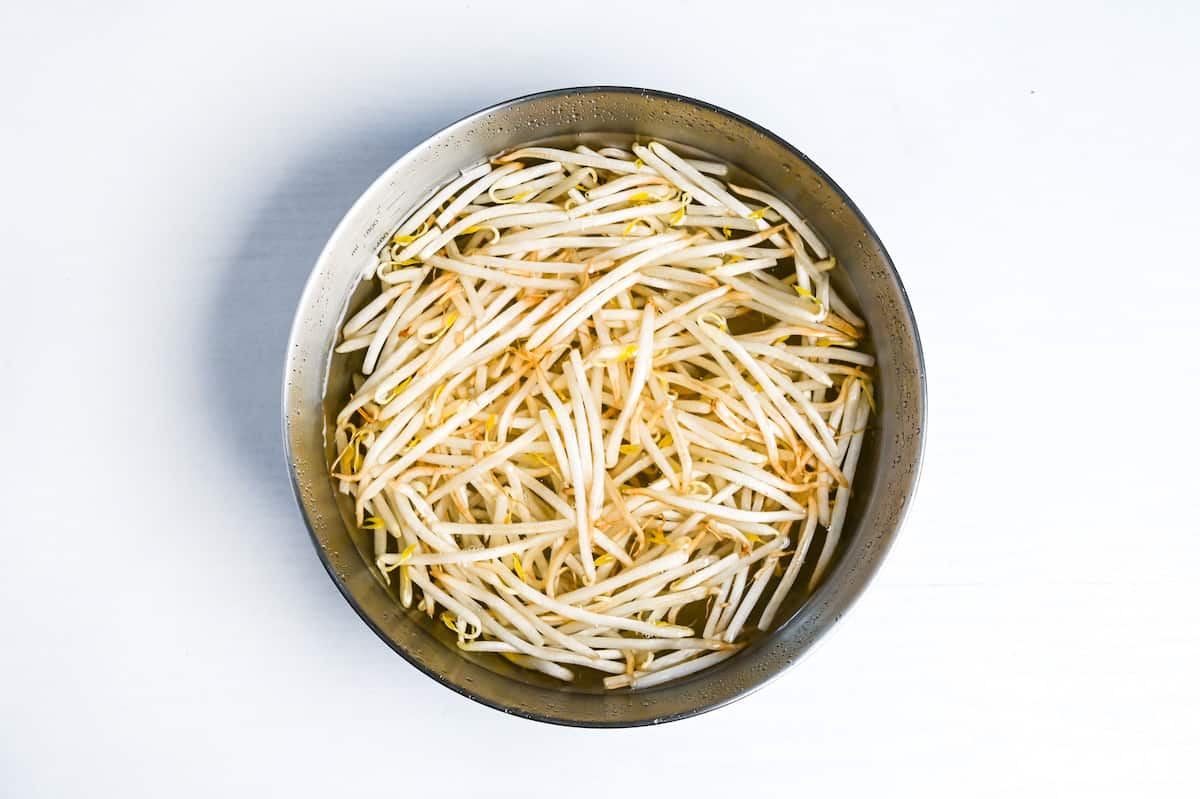
ii. Drain them thoroughly before adding to the pan.
i. Heat your largest pan or wok over medium-high heat and add a drizzle of cooking oil. Add your noodles in a single layer if possible. Let them sizzle undisturbed for 2-3 minutes until the bottom turns golden and slightly crispy.

ii. Flip and repeat on the other side. Once both sides are lightly golden, transfer the noodles to a plate and set aside.
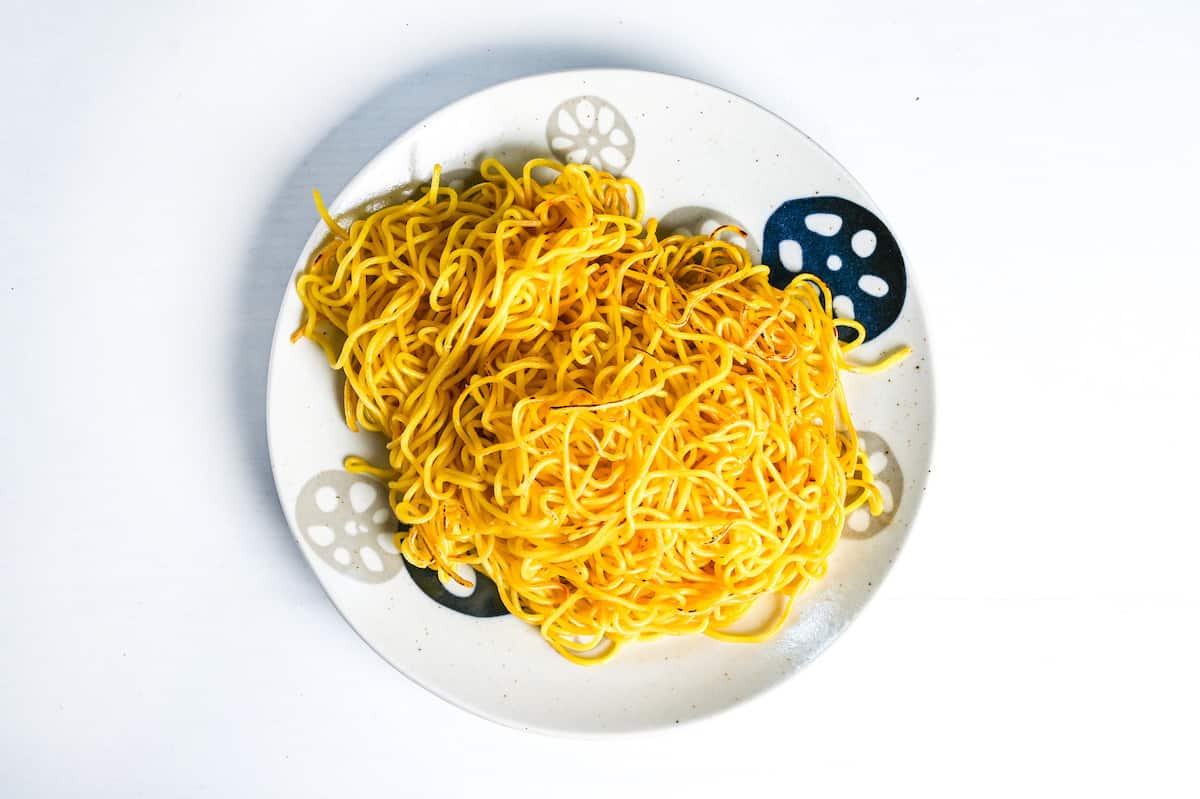
Without this initial frying, your finished yakisoba will likely turn out limp and sticky. The light crust acts like armor, protecting the noodle texture during the final stir-fry. Think of it as the difference between al dente pasta and overcooked.
i. In the same pan, add a touch more oil. Toss in shrimp and asparagus; season with a light sprinkle of salt and pepper. Stir-fry until shrimp turn opaque pink with a gentle curl and asparagus goes glossy emerald with browned tips.
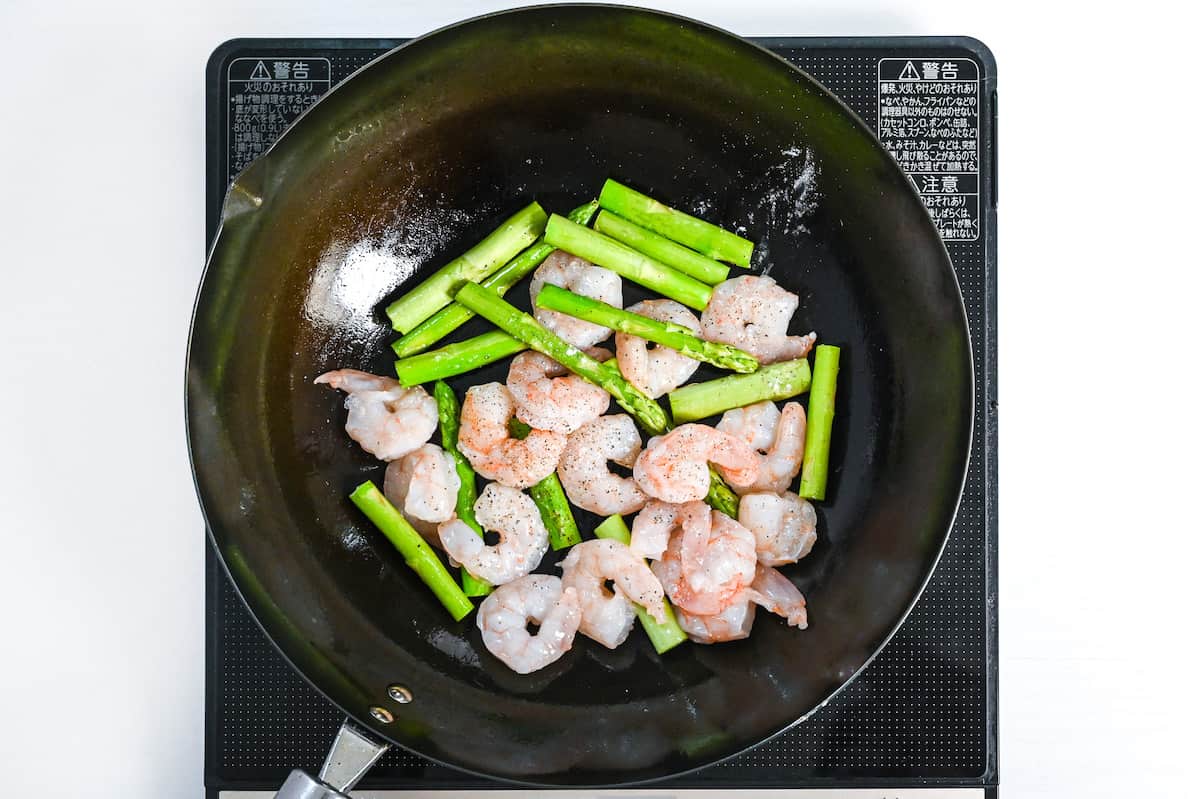
i. Slide the noodles back in and toss to break them apart. If they cling a bit, don’t panic! Sauce later will loosen everything. Keep the heat at medium-high so you maintain sizzle without smoking.
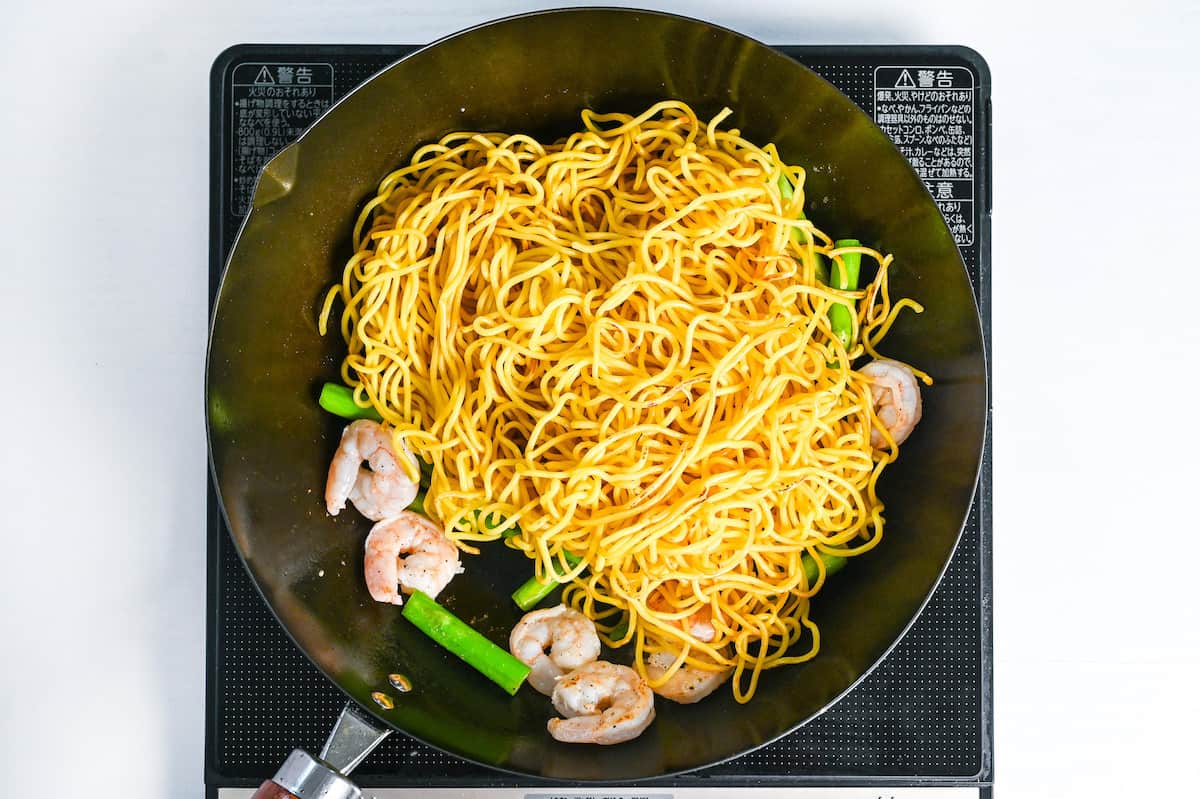
i. Here’s where my yakisoba technique gets interesting: push the noodle mixture to one side of your pan, creating an empty space.
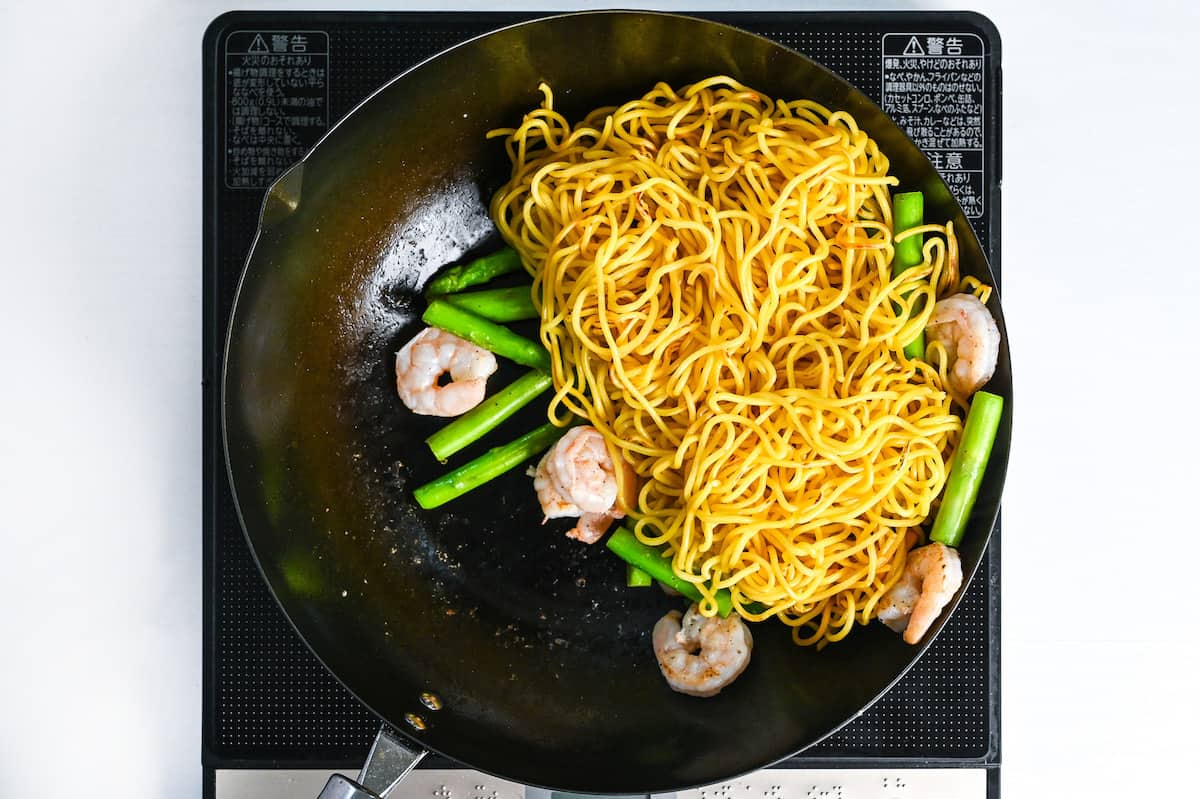
ii. Drain your soaked bean sprouts thoroughly and place them in that empty area.
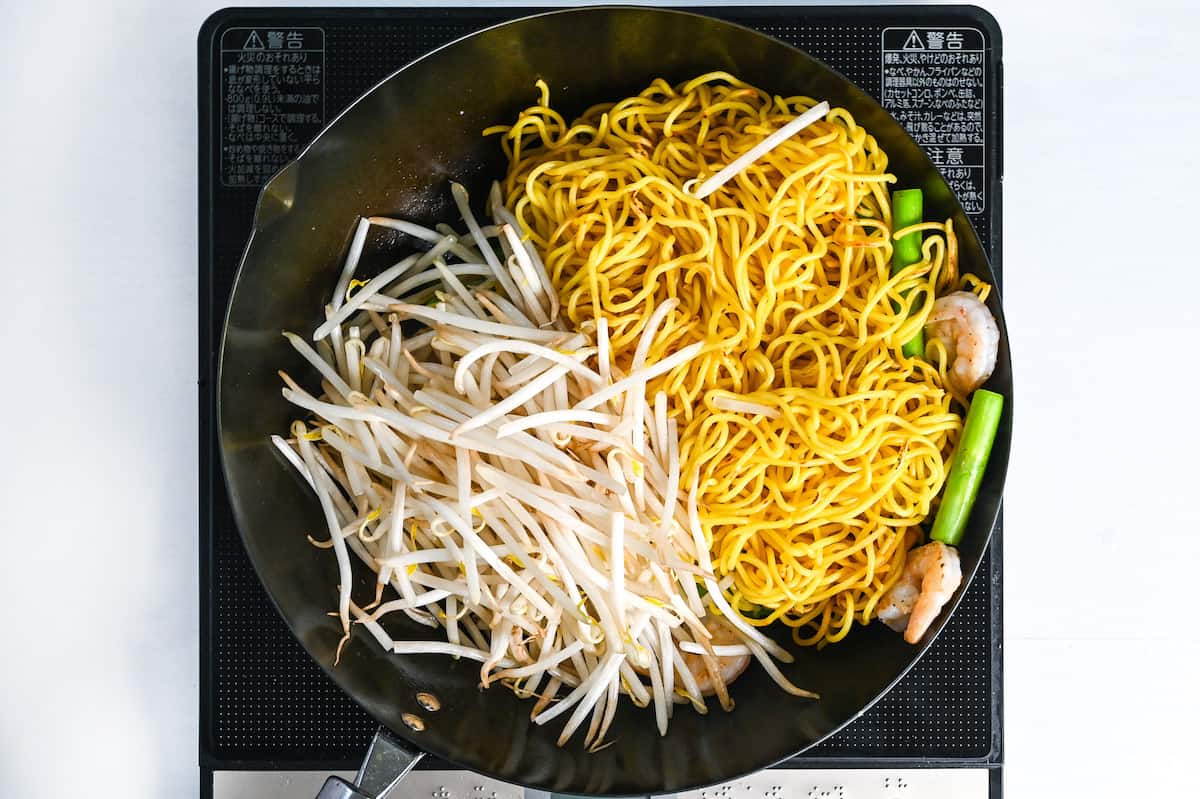
iii. Next, pile the raw cabbage directly on top of the bean sprouts, then use your spatula to move the noodle mixture over the cabbage like a dome.
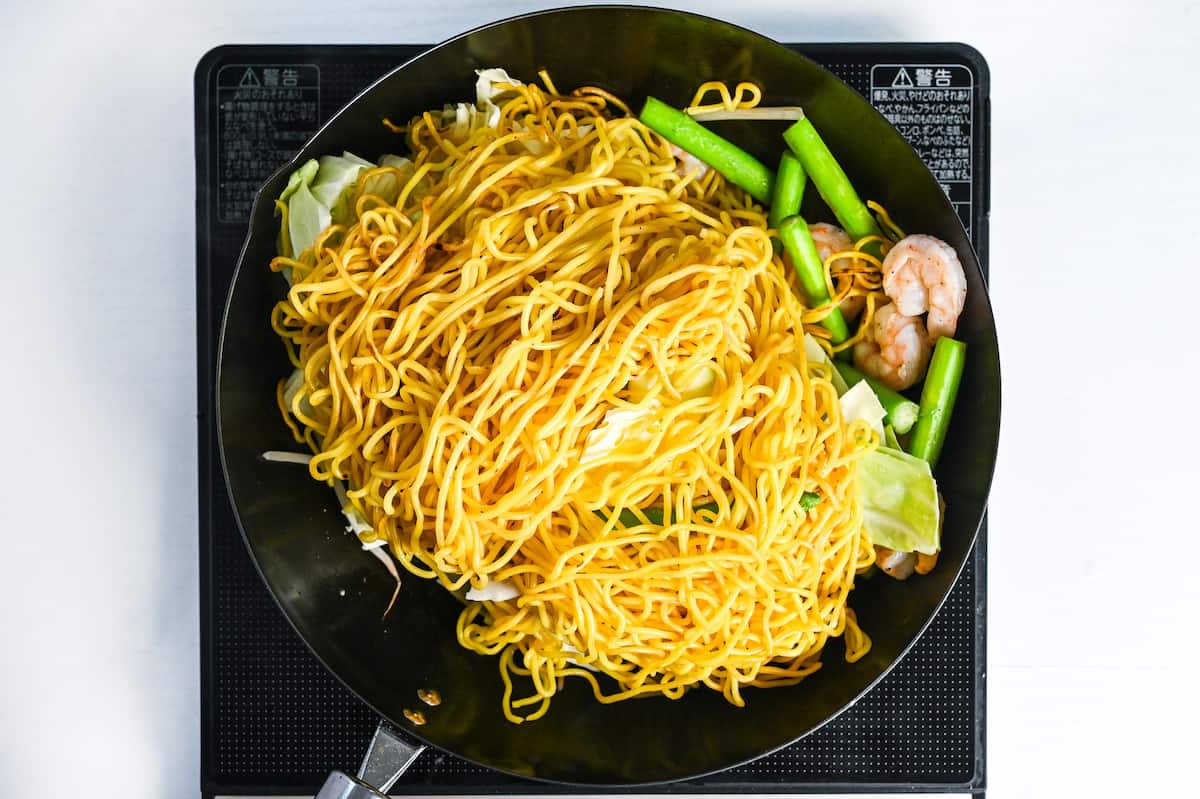
iv. Move the shrimp and asparagus to the very top to prevent them from overcooking. Let this whole stack cook for 2-3 minutes until you can see the cabbage starting to wilt and the bean sprouts looking slightly translucent.
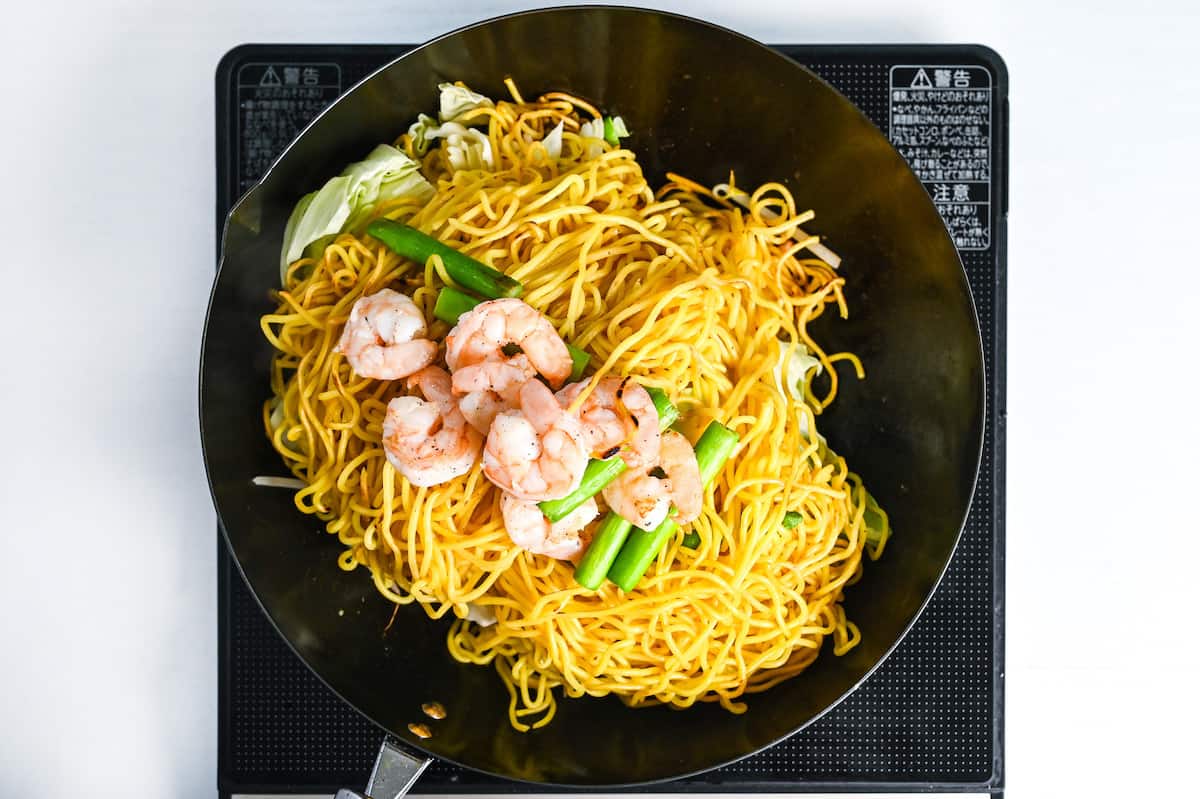
The bean sprouts release steam from the bottom, which gently cooks the cabbage in the middle layer without making it soggy. Meanwhile, the noodles on top act like a lid, trapping just enough steam while staying protected from direct moisture.
i. Pour the lemon sauce around the edges so it hits hot metal first, then crank the heat to high. Stir-fry about 1 minute to burn off the sake’s alcohol, then toss until everything is evenly glossy and fragrant.
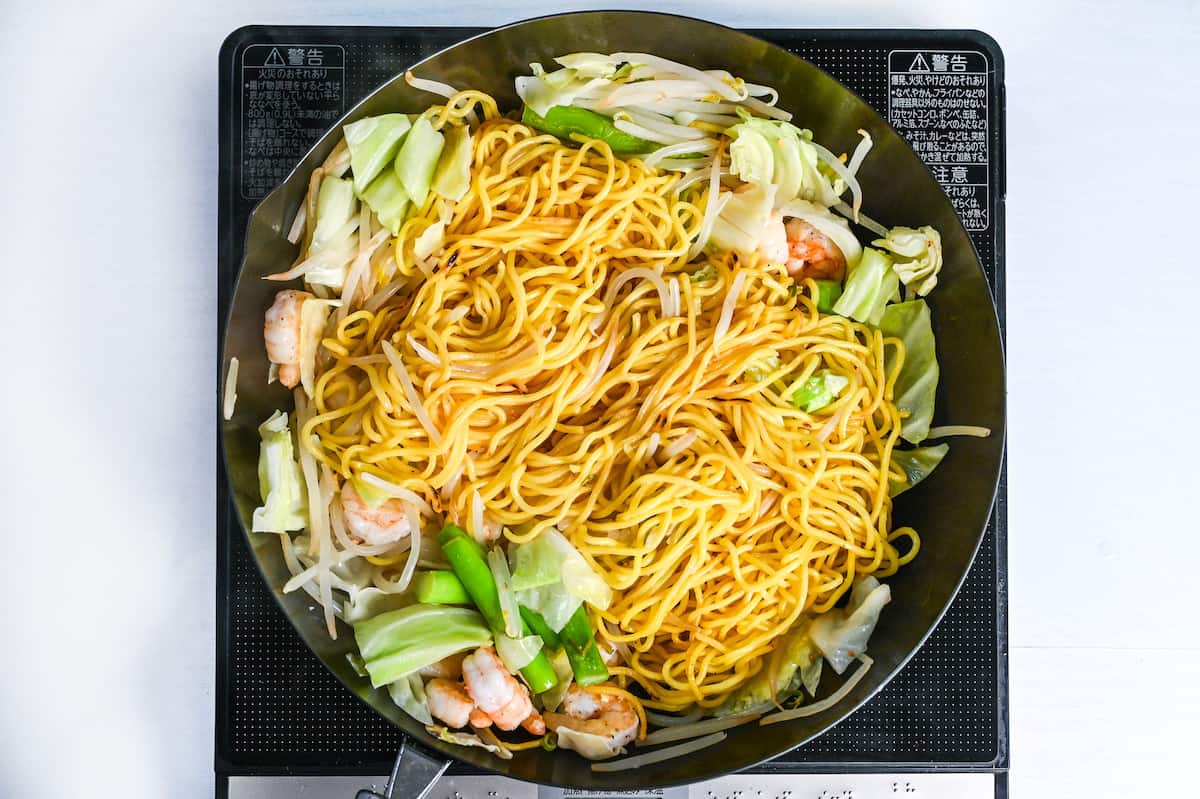
ii. Divide onto warm plates. Shower with more chopped green onion if you like.
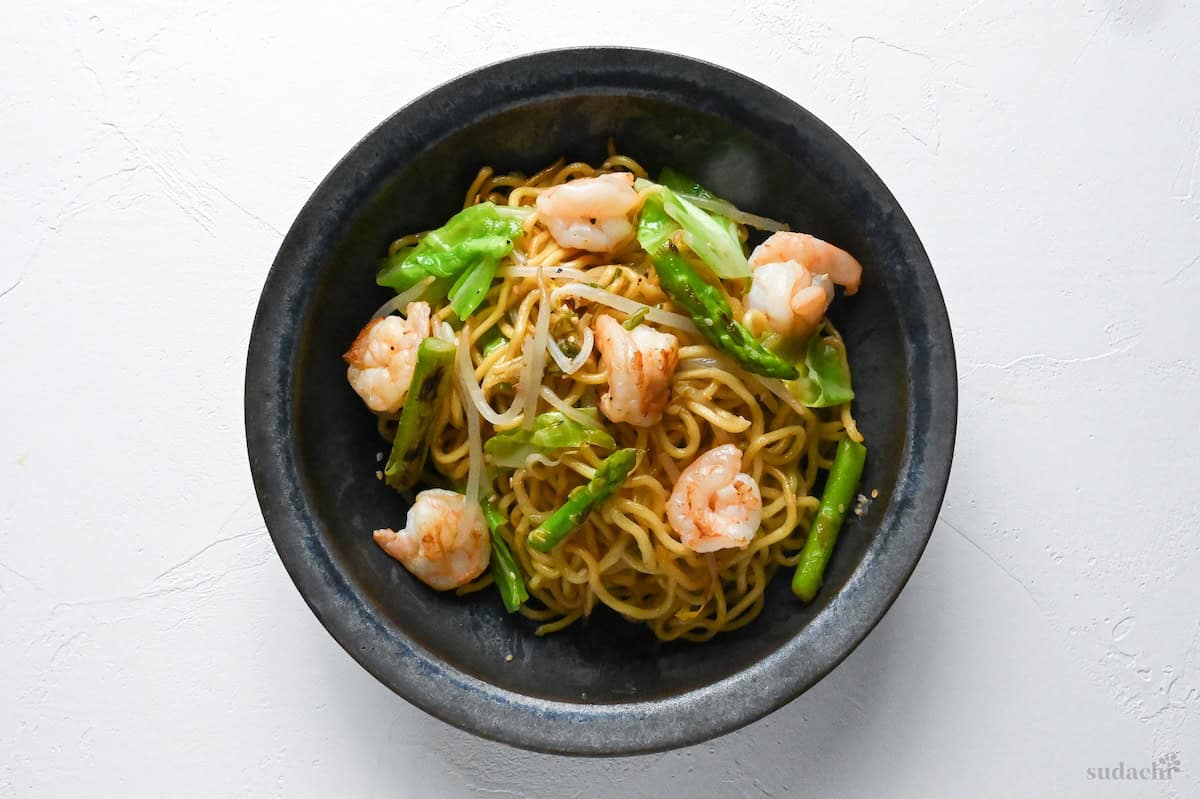
iii. The first bite should hit tangy-salty with a citrus lift, then give way to sweet asparagus snap, juicy shrimp, and noodles with a gentle chew. If you crave extra pop, add a squeeze of lemon at the table.

Essential Tips & Tricks
- Pre-fry noodles in a hot, lightly oiled pan until spotty-gold. This prevents sogginess later.
- Layer vegetables strategically! Put bean sprouts on bottom, cabbage in middle, noodles on top to create a steaming system that cooks everything evenly.
- This is shio (salt-forward) yakisoba, skip bottled sweet brown sauce to keep flavors clean.
With these simple tips in mind, you’re set for success every time you make this shio yakisoba.
Storage & Meal Prep
Fridge: Airtight container, 2-3 days maximum. Note that noodle texture will soften significantly. Best eaten within 24 hours.
Freezer: Not recommended.
Meal Prep: Prepare sauce and pre-cut all vegetables up to 2 days ahead. Store sauce in fridge and keep cut vegetables in separate containers.
Reheating: Pan/wok over medium-high, splash in 1-2 tsp water to steam 30-60 sec, then toss on high to re-crisp.
What to Serve With This Recipe
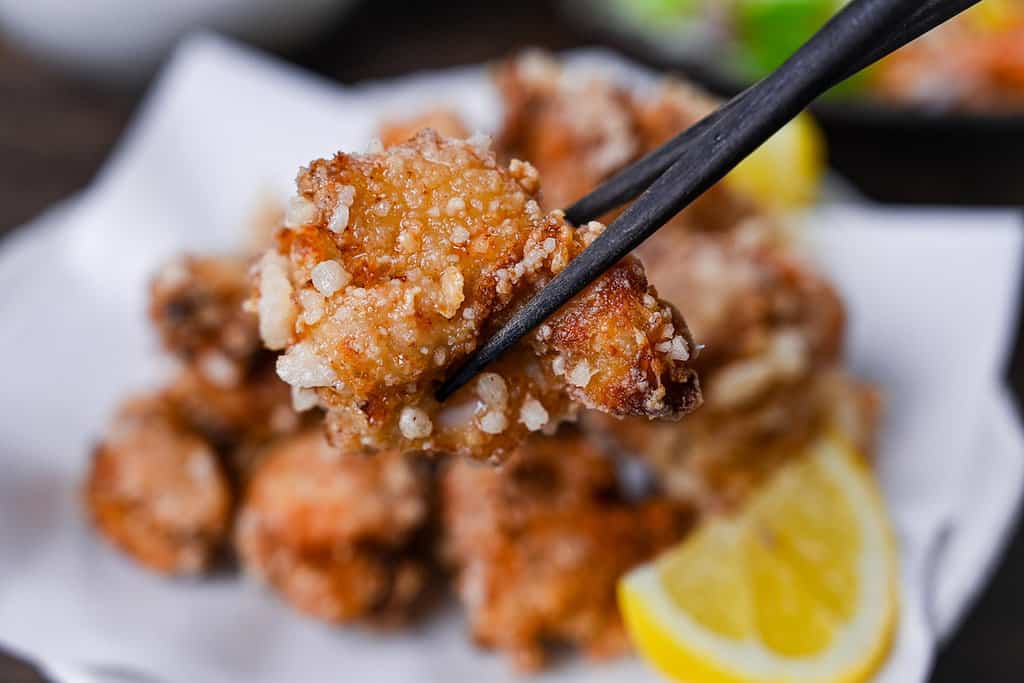
Shio Yakisoba Q&A
Yes, but use half the amount since Western bouillon is typically more heavily seasoned with herbs. Taste your sauce before adding to avoid over-flavoring.
Yes, but expect a different chew. Udon gives bouncy heft, spaghetti (al dente) is a decent stand-in especially if you use my spaghetti ramen hack.
Look for fresh ready-to-use yakisoba noodles in the refrigerated Asian section. If unavailable, dried chukamen or even lo mein noodles can work as substitutes.
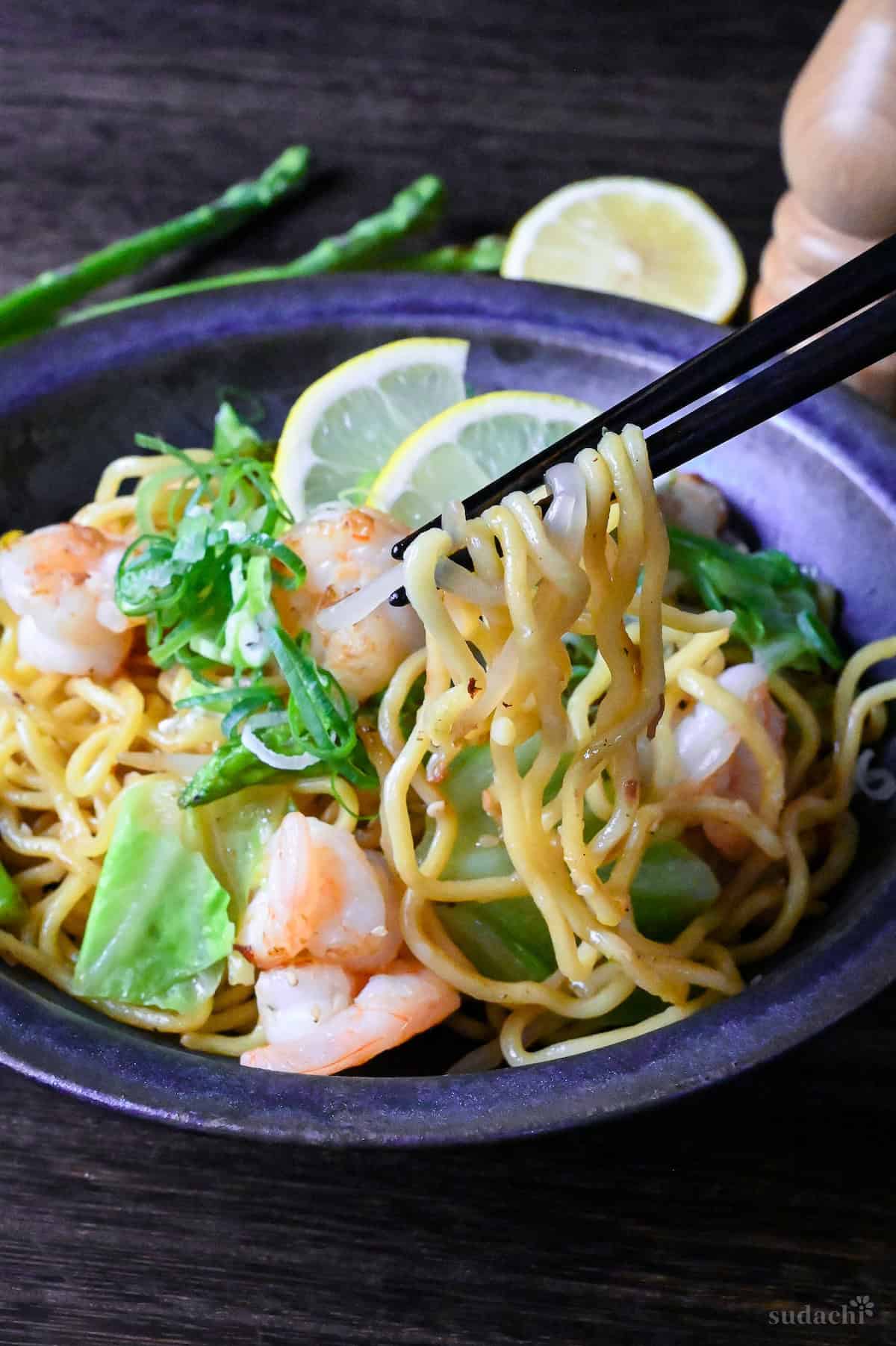
More Japanese Street Food Recipes
- Japanese Octopus Balls (Takoyaki)
- Karaage Using Chicken Breast
- Osaka Style Kushikatsu
- Best Japanese Gyoza
Ready to explore Japan’s vibrant food scene? Learn how to recreate the most famous street food in Japan.
Did You Try This Recipe?
I would love to hear your thoughts!
💬 Leave a review and ⭐️ rating in the comments below. 📷 I also love to see your photos – submit them here!

Shio Yakisoba with Lemon and Seafood
Ingredients
Shio Yakisoba Sauce
- 1 lemon zest and juice from medium lemon
- 1 tbsp sake or dry white wine, dry sherry, water
- 1 tsp toasted sesame oil
- 1 tsp Chinese-style chicken bouillon powder
- 1 tsp toasted white sesame seeds
- ½ tsp salt
- ½ tsp grated garlic or garlic paste
- ¼ tsp sugar
- 1 pinch ground black pepper
- ½ tsp Japanese light soy sauce (usukuchi shoyu) or regular soy sauce
- 1 tbsp finely chopped green onions scallions
Shio Lemon Yakisoba
- 200 g shrimp deshelled and deviened
- 100 g bean sprouts
- 1 tsp cooking oil neutral oil
- 200 g yakisoba noodles (pre-steamed) or ramen noodles, spaghetti hack
- salt and pepper
- 2 stalks asparagus cut into bitesize pieces
- 50 g green cabbage cut into bitesize pieces
- toasted sesame oil to garnish
- finely chopped green onions to garnish
My recommended brands of ingredients and seasonings can be found in my Japanese pantry guide.
Can’t find certain Japanese ingredients? See my substitution guide here.
Instructions
- First, take a small bowl and add all of the sauce ingredients (zest and juice of 1 lemon, 1 tbsp sake, 1 tsp toasted sesame oil, 1 tsp Chinese-style chicken bouillon powder, 1 tsp toasted white sesame seeds, ½ tsp salt, ½ tsp grated garlic, ¼ tsp sugar, 1 pinch ground black pepper, ½ tsp Japanese light soy sauce (usukuchi shoyu) and 1 tbsp finely chopped green onions.) Mix thoroughly and set aside for later.

- Next, soak 100 g bean sprouts in a bowl of cold water with a few pinches of salt. Set aside for later.

- Wash 200 g shrimp (deshelled and deveined) and pat dry with kitchen paper. Set by the stove for later.

- Heat a large pan or wok on medium-high and add 1 tsp cooking oil. Once hot, add 200 g yakisoba noodles (pre-steamed) to the pan and fry until lightly crispy on both sides.

- Transfer the noodles to a plate and set by the stove for later.

- Reuse the pan and add more oil if necessary. Add the shrimp and 2 stalks asparagus. Sprinkle them with a generous pinch of salt and pepper and fry until the shrimps are cooked through.

- Add the noodles back to the pan and mix them a little to help break them apart if they became stuck together.

- Push the noodles to one side to make space in the pan.

- Drain the beansprouts and shake thoroughly to remove excess water. Place them in the empty space in the pan and lay 50 g green cabbage on top.

- Move the noodles on the top of the cabbage. The beansprouts will cook at the bottom of the pan while leftover moisture will evaporate and steam the cabbage in the middle.

- As it cooks, move the shrimp and asparagus to the top of the noodles to stop them from burning.

- When the beansprouts and cabbage are slightly softened (about 2 minutes later) turn up the heat to high and drizzle the lemon salt sauce around the pan. Mix until well incorporated.

- Serve up and garnish with a drizzle of toasted sesame oil and finely chopped green onions! Enjoy!





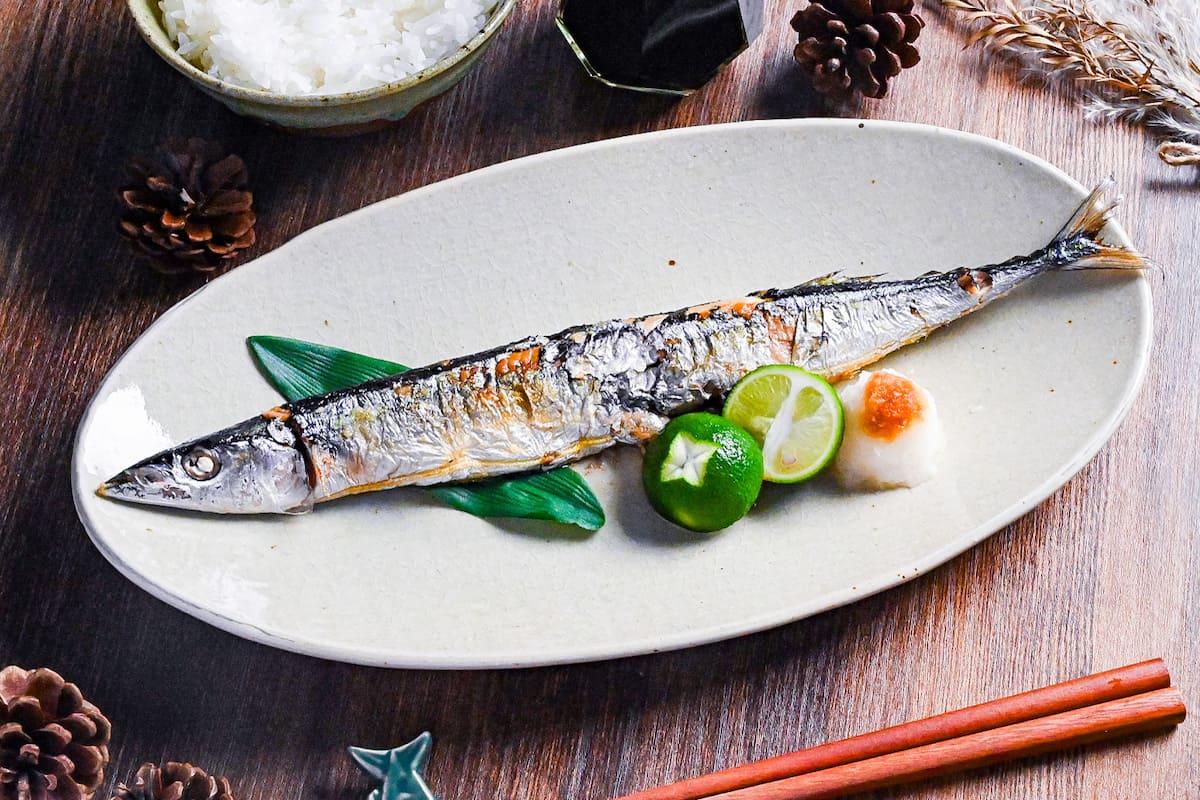
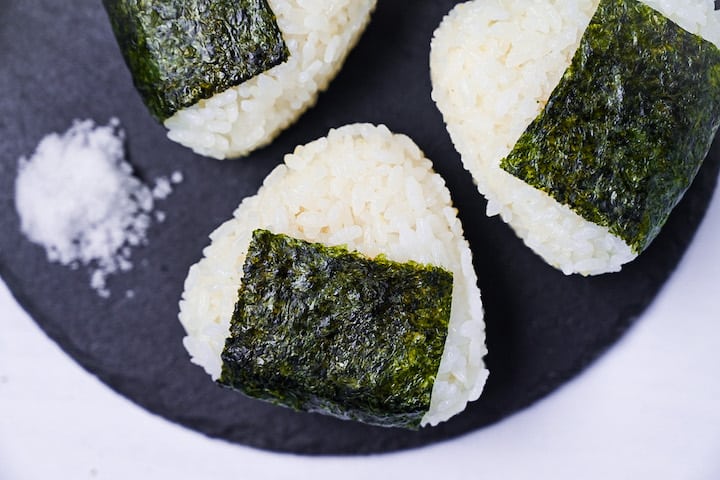


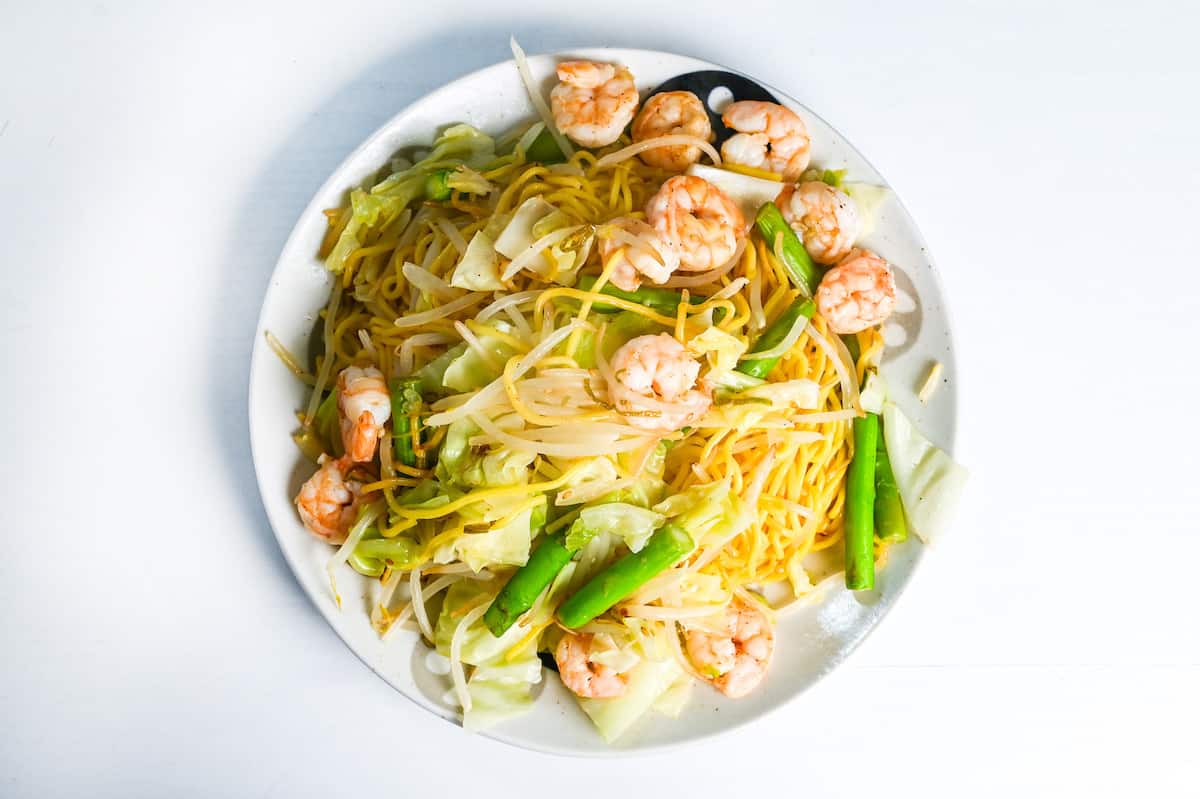
Leave a rating and a comment